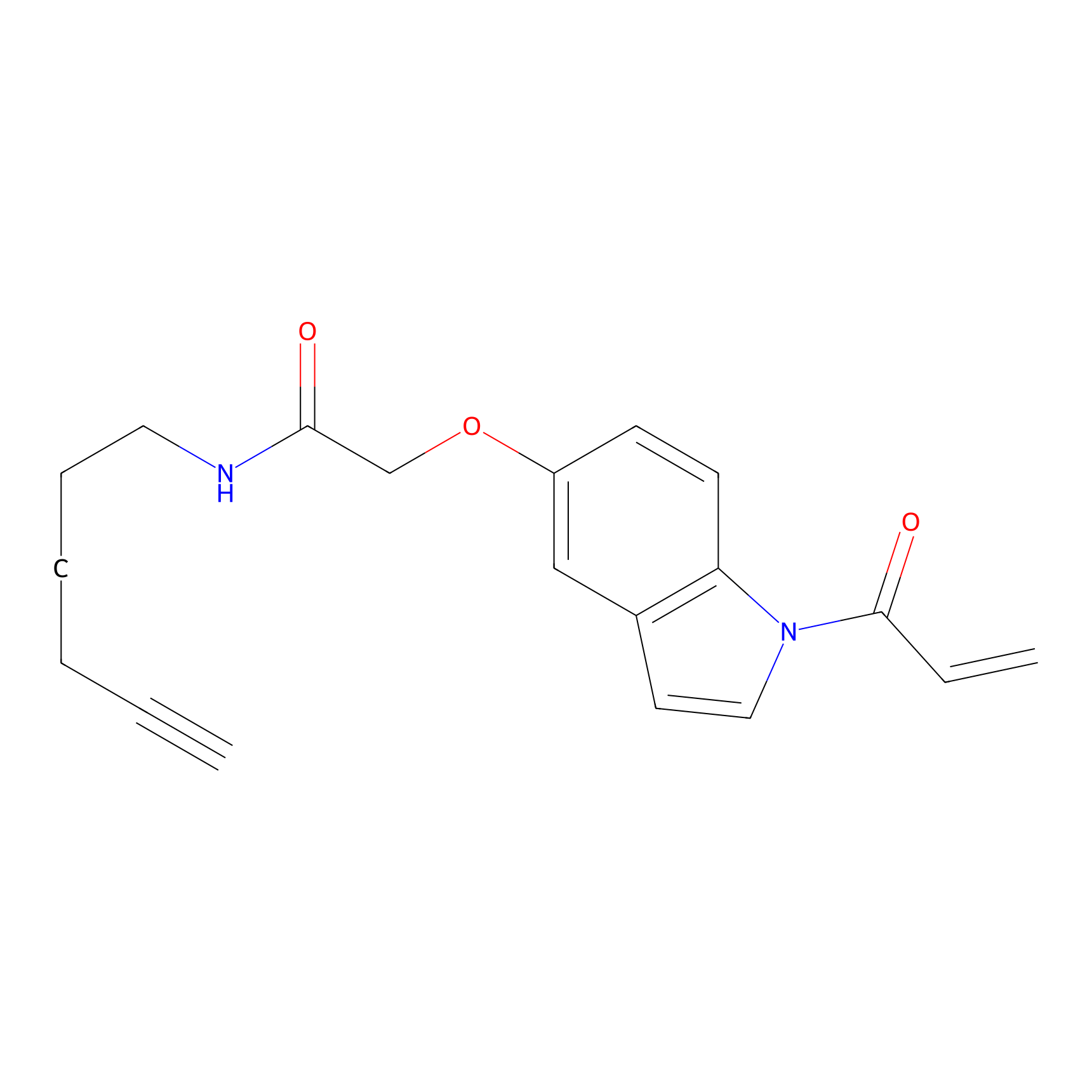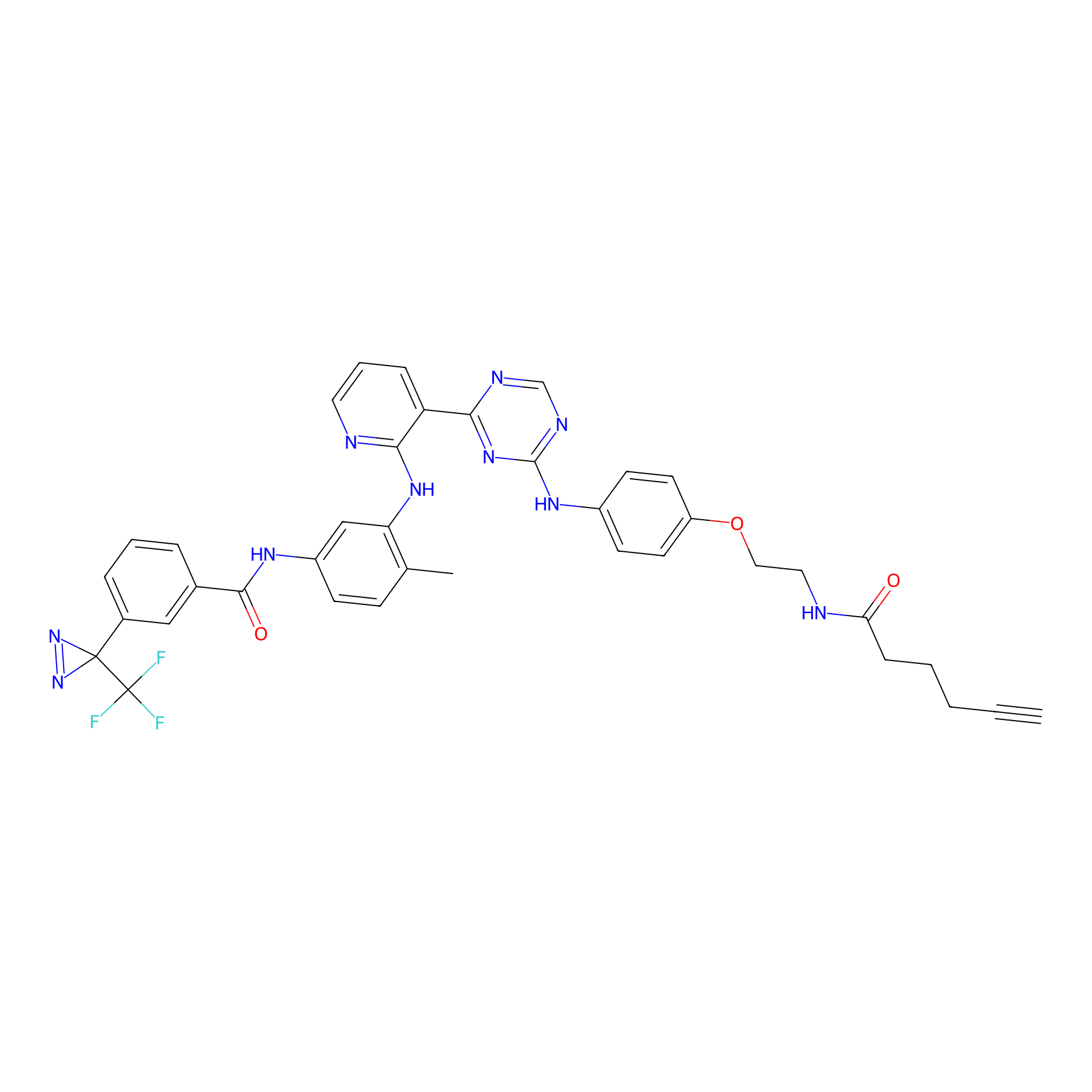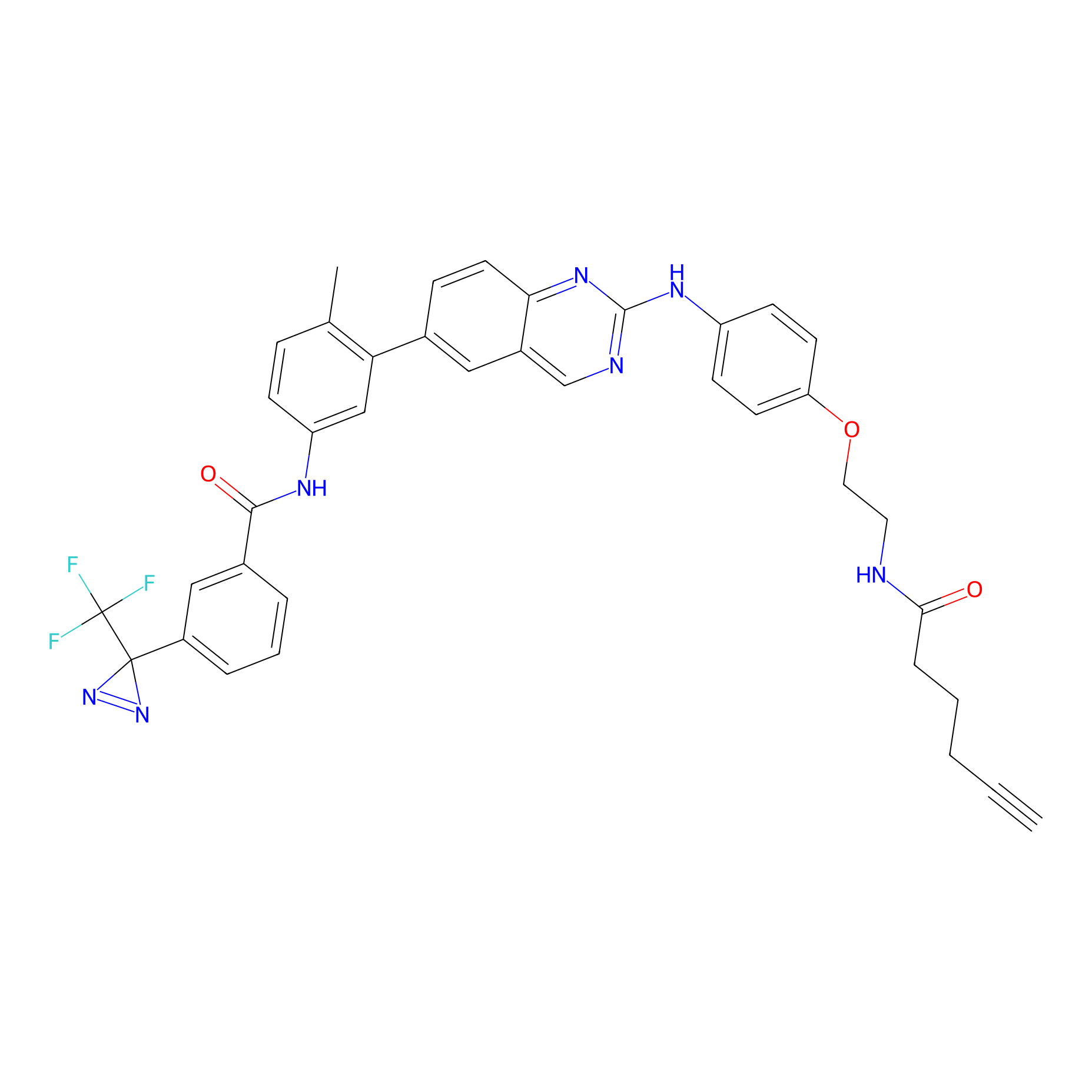Details of the Target
General Information of Target
Target Site Mutations in Different Cell Lines
Probe(s) Labeling This Target
ABPP Probe
| Probe name | Structure | Binding Site(Ratio) | Interaction ID | Ref | |
|---|---|---|---|---|---|
|
STPyne Probe Info |
 |
K128(10.00) | LDD0277 | [1] | |
|
DBIA Probe Info |
 |
C433(2.24) | LDD3389 | [2] | |
|
NAIA_5 Probe Info |
 |
C82(0.63) | LDD2227 | [3] | |
|
IA-alkyne Probe Info |
 |
N.A. | LDD0162 | [4] | |
PAL-AfBPP Probe
| Probe name | Structure | Binding Site(Ratio) | Interaction ID | Ref | |
|---|---|---|---|---|---|
|
DFG-out-3 Probe Info |
 |
7.70 | LDD0074 | [5] | |
|
DFG-out-4 Probe Info |
 |
0.00 | LDD0075 | [5] | |
Competitor(s) Related to This Target
| Competitor ID | Name | Cell line | Binding Site(Ratio) | Interaction ID | Ref |
|---|---|---|---|---|---|
| LDCM0632 | CL-Sc | Hep-G2 | C82(0.63) | LDD2227 | [3] |
| LDCM0017 | DFG-out-2 | A431 | 0.00 | LDD0075 | [5] |
| LDCM0022 | KB02 | ICC19 | C433(2.62) | LDD2386 | [2] |
| LDCM0023 | KB03 | ICC4 | C433(1.92) | LDD2809 | [2] |
| LDCM0024 | KB05 | OZ | C433(2.24) | LDD3389 | [2] |
| LDCM0016 | Ranjitkar_cp1 | A431 | 7.70 | LDD0074 | [5] |
The Interaction Atlas With This Target
The Protein(s) Related To This Target
Enzyme
Transporter and channel
Transcription factor
Other
The Drug(s) Related To This Target
Approved
| Drug Name | Drug Type | External ID | |||
|---|---|---|---|---|---|
| Fostamatinib | Small molecular drug | DB12010 | |||
| Tivozanib | Small molecular drug | DB11800 | |||
| Vandetanib | Small molecular drug | DB05294 | |||
| Zanubrutinib | . | DB15035 | |||
Phase 1
| Drug Name | Drug Type | External ID | |||
|---|---|---|---|---|---|
| Isis-crp | Antisense drug | D06CIJ | |||
Investigative
| Drug Name | Drug Type | External ID | |||
|---|---|---|---|---|---|
| Pmid21855335c19a | Small molecular drug | D0IZ8M | |||
References
